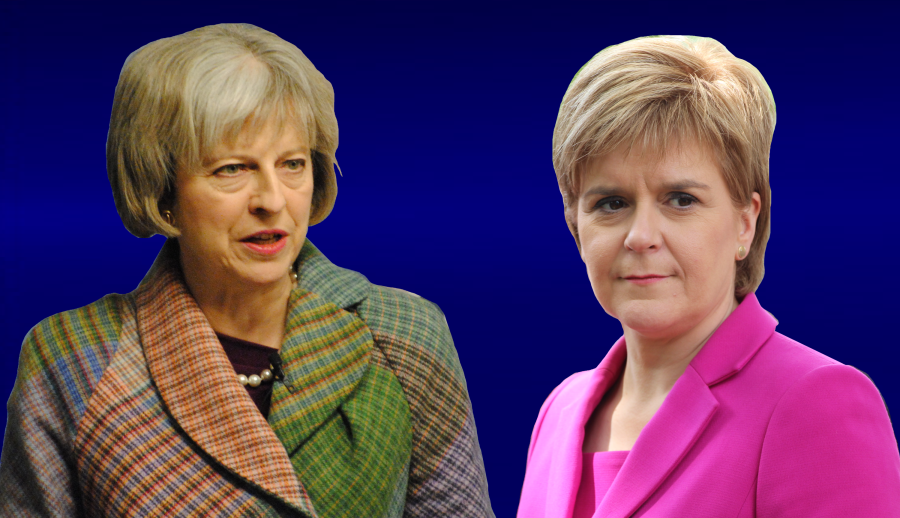On the 23 of June this year, 52% of the British electorate voted in favour of leaving the European Union (EU). This decision, however, revealed the divisive nature of the referendum topic. While majorities in England and Wales voted in favour of leaving the EU (53% respectively), 62% of voters in Scotland and 56% in Northern Ireland voted to remain. In Scotland, the story takes a more remarkable twist: all of the 32 council wards returned a vote in favour of remain. As predicted, a constitutional crisis has ensued. The impending secession of the United Kingdom (UK) from the EU has brought the UK’s other important Union under the spotlight. As talk of ‘BREXIT’ remains large, so too does the threat of another secession, ‘SCOTEXIT’.
The conflict centres on Scotland’s future in the EU (or at least in the European single market) and its links with the rest of the UK. As the British government is now preparing negotiations with its European counterparts on how BREXIT will actually work in practice once the UK has triggered Article 50 of the Lisbon Treaty, it is becoming increasingly evident that the British government’s negotiation strategy will be robust and not shy away from what has been termed as “hard BREXIT” – the complete removal of the UK from the European single market and the introduction of basic World Trade Organisation rules for the trade relations between the UK and the rest of the EU.
This has further deepened divisions within the UK, with Scottish First Minister Nicola Sturgeon arguing not only for the importance of the European single market for Scotland’s economy, but against Scotland ‘being dragged out of the EU against its will’. In light of the potential hardened UK negotiation strategy, Sturgeon has reinforced the idea of a second independence referendum in Scotland, (“indyref2”), highlighting that if the British government does not take the interests of Scotland into account, the Scottish Government must protect its own interests – by pushing for independence from the UK and re-joining the EU. Of course this discussion goes back to “indyref1” when the people of Scotland were told in 2014 that the only way for them to ensure continued membership in the EU was to vote against Scottish independence and for the existing Union with the rest of the UK. This promise, then endorsed by the leaders of all three Unionist parties, lies in tatters; once the UK leaves the EU, so too must Scotland.
However, the heightened tensions between the Scottish government (under the leadership of the Scottish National Party) and the UK government (under the new post-referendum leadership of Theresa May) demonstrates not only deep divisions in the UK (over BREXIT), but also a clash of nationalisms and the deepening of a constitutional crisis that goes back to the very origins of the Union between Scotland and England. Scotland voluntarily chose to join the Union and so surely has the right to voluntarily leave? In addition to this, the Union of 1707 brought together two nations which were viewed as equal partners, does this therefore not mean that Scotland should have an equal say in the affairs of the union, particularly those affairs which substantially affect the national interest of Scotland and which will undoubtedly have far-reaching ramifications to be felt way beyond the immediate future?
The current crisis highlights a stand-off between the two most important female leaders in the UK. Nicola Sturgeon’s threat of a new independence referendum has recently been strengthened by the SNP government’s publication of a new draft bill on a second referendum. In this vein, the SNP leader has shown that any attempt to ‘see Scotland driven off a hard Brexit cliff edge’ would serve to strengthen her resolve in protecting Scotland’s interests and calling for a referendum on independence. While, for Theresa May, there will be increased trepidation regarding the referendum threats of the Scottish Government, the prime minister will take solace in the fact that, despite the increasing support for Scottish independence in the immediate aftermath of the BREXIT vote, there is still no majority in Scotland in favour of Scottish independence. This, alongside growing resolve for the British Government’s increasingly conservative stance on immigration and the protection of the British economy post-EU secession, demonstrates that May, like her Scottish counterpart, also means business.

And yet, neither Theresa May’s perceived preference for a “hard BREXIT”, nor Sturgeon’s promised push for a second independence referendum can easily be achieved. For Theresa May knows well that “hard BREXIT” will not only have severe economic consequences for the UK as a whole, but would indisputably fuel support for Scottish independence. Likewise, Nicola Sturgeon knows that if she were to hold a second independence referendum she would probably lose; most opinion polls highlight a small majority still against Scottish independence. What this demonstrates, then, is a reliance on a ‘mutual mess-up’ between the two leaders and their governments. Sturgeon and the SNP need the British government to go for a “hard BREXIT” in order to change public opinion in Scotland in favour of independence. Theresa May knows, however, that if the SNP continues to peddle a pro-independence agenda at the expense of looking for another viable and palatable solution to leaving the EU, she can potentially paint the Scottish government as opportunists, committed to breaking up the Union regardless of BREXIT negotiations.
What this also illuminates, though, is the complex nature of political culture in Scotland. People are predominantly pro-EU, and at least for the time being, are also pro-UK. While people are aware of how important the EU is for Scotland, they do not necessarily believe that if the UK were to leave the EU, it would automatically put Scotland at a substantial disadvantage. Using the parlance of Nicola Sturgeon, until Scots experience a tangible ‘material change in circumstances’ as a result of the vote to leave the EU, support for independence looks likely to remain below the 50% benchmark required to win a referendum. Theresa May, however, is in a similar dilemma. While actions may speak louder than words, until Article 50 is officially triggered, all she has is rhetoric.
The BREXIT vote has fundamentally changed the debate on Scottish independence, as well as reignited discussions on the constitutional future of the UK. Political sparring aside, the constitutional setup of the UK and Scotland remains in the balance, and speculation abounds as to what any future arrangements, including independence, will look like. At the Conservative party conference in October 2016, we witnessed first-hand, the prime minister’s commitment to BREXIT, and her dismissal of Scottish support for staying in the single market when the rest of the UK leaves, ‘there is no opt-out of Brexit’ quipped May. However, at the SNP conference shortly afterwards we also saw the commitment of Sturgeon to championing Scottish interests in BREXIT negotiations, seeking to secure a deal that benefits Scotland: the choice between remaining in the single market as part of the UK or re-joining it as an independent country. The choice however, for neither May or Sturgeon, is that simple. The Prime Minister knows that as soon as Article 50 is triggered, the clock begins to tick and while she will be the prime minister who will lead the UK out of the EU, she will not want to go down in history as the same prime minister who presided over the breakup of the UK. Nicola Sturgeon’s finger, however, will remain equally poised over her ‘call a referendum’ button (it is worth noting, that the Scottish Parliament does not have the power to call a referendum; constitutional issues remain reserved to Westminster). Calling the second referendum on independence is likely to be the most important decision of her leadership; if her timing is off, however, she will also secure her place in the history books – as the Scottish First Minister who got it spectacularly wrong.
Paul Anderson is a PhD student in Politics and International Relations at Canterbury Christ Church University.
Soeren Keil is Reader in Politics and International Relations at Canterbury Christ Church University
 Politics
Politics Anna Vanaga
Anna Vanaga 695
695



2 comments on “Waiting for the mutual “mess-up” – Reassessing the Theresa May-Nicola Sturgeon Relationship”